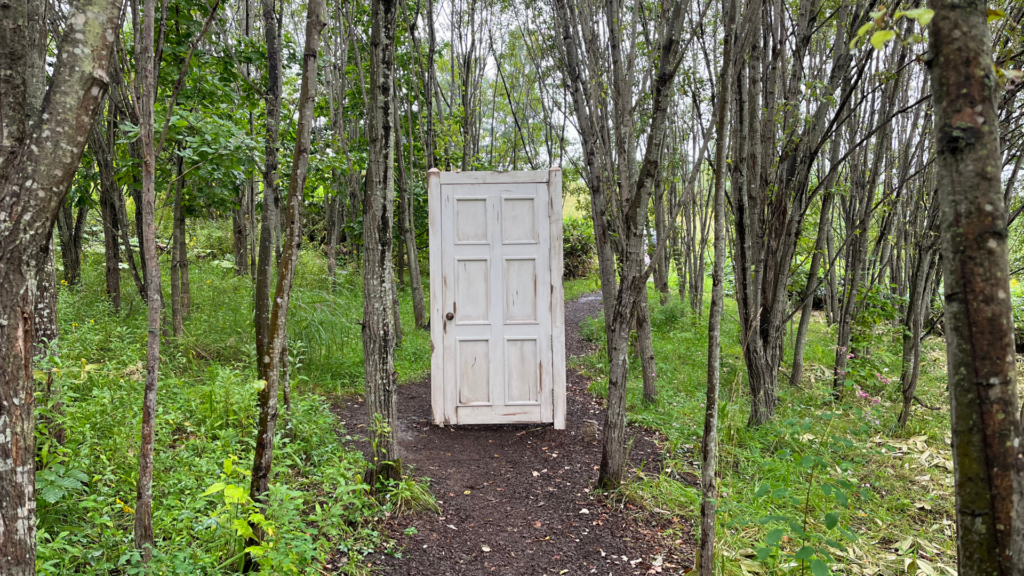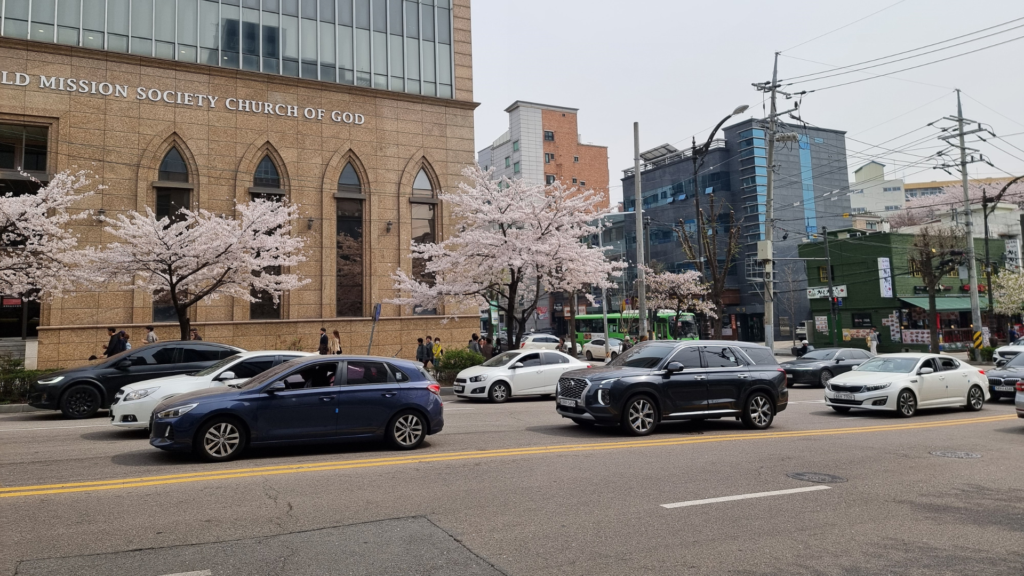Korean street food is a cultural emblem and has become an increasingly important commodity in drawing in tourists from across the world. The Korean street food scene is an extremely dynamic one.
Korean Street food is not confined to a singular static space. Rather, these glutinous havens can be found everywhere, whether it be a steamed corn lady whose truck has been visiting the same neighborhood spot for the past 20 years or it is an obscure tteokbokki (떡볶이; spicy red rice cakes) kiosk tucked away in the city’s financial district.
Therefore, the scope of Korean street food is so large that it is nearly impossible to condense its vastness into one article. Nonetheless, this article will outline 8 of Korea’s most famous street foods, let’s dig in!
Top 8 Korean street food you should try

1. Tteokbokki (떡볶이)
Tteokbokki is a dish made from rice cakes cooked in a special red sauce concoction which typically includes Gochujang (Korean chili paste), Gochugaru (Korean chili flakes), soy sauce, sugar, and some umami broth. Depending on the owner’s secret recipe, Tteokbokki can taste more spicy in some places while some sweeter. Nonetheless, Tteokbokki is spicy, sweet and savory in general!
Sometimes, you may find boiled eggs or fish cakes cooked together with the rice cakes, giving the dish more texture and flavor. To complete the meal, you can also enjoy it with some Sundae (순대, blood sausage) or Twigim (튀김, deep-fried food).
Did you know that back in the Joseon Dynasty, Tteok (rice cakes) was a staple food among the lower classes? Today, with the many variations of Tteok like Tteokbokki, it has emerged to be one of Korea’s most famous street foods among locals and tourists. Do not miss it when you visit Korea soon!
2. Sundae (순대)
We spoke about enjoying Tteokbokki with Sundae (blood sausage) but Sundae is actually a local delicacy on its own. Unique to Korea’s food culture, you can probably only find authentic Sundae in Korea. Sundae is typically made from a mixture of pork blood, Dangmyeon (sweet potato starch noodles), and glutinous rice stuffed in pig intestines.
Blood sausage as it sounds, could be daunting to most but it is actually delicious when paired with the right dipping seasonings. Steamed Sundae is best enjoyed with salt & pepper and it has a distinct chewy yet gelatinous texture as it is firm on the outside with a soft, moist filling.
There are also other variations of Sundae you can find at Korean street food kiosks like the Sundae Bokkeum (stir-fried blood sausage) & Sundae Twigim (deep fried Sundae). Sundae Bokkeum is cooked in a spicy and savory sauce (often different from the Tteokbokki sauce) which helps to elevate the flavors and texture of the blood sausage. The making of Sundae Twigim is to deep fry the Sundae after coating it thinly in flour, giving it the perfect crispy outer and moist filling when enjoyed.
Which version of the Sundae is your favorite?
3. Odeng (오뎅)
Ever wondered what it is like to sip the Odeng broth from a paper cup? Often a scene you can find in K-dramas but not if you experience it first-hand! So what is Odeng? It is fish cakes skewered on sticks and slowly cooked in a broth.
The making of Odeng is simple, which includes fish meat like pollock or cod, mixed with starch and various seasonings. For cooking preparation, the fish cakes are skewered on wooden sticks and then boiled in an anchovy or kelp broth.
This simple dish is often enjoyed just on its own or simply dip it in a special soy sauce which you can find at every Korean street food kiosk. Usually, the broth is self-serve so all you need to do is to grab a paper cup and pour however the amount of broth you need and voila, sip on that warm and hearty broth!
4. Twigim (튀김)
What is Korean street food without fried food, right? Behold the assorted Twigim (Korean fried food) because it is not just chicken and french fries but more of the Korean flavors. The Sundae Twigim (deep-fried Sundae) is only one of these delicious fried foods.
First off is the Kimmari (김말이, Crispy seaweed noodle rolls). While Kimmari might not taste the same at every food stall, it is typically savory, and sometimes spicy. Kimmari goes well with Tteokbokki or just enjoyed on its own.
Next, we have the Gochu twigim (고추 튀김) which is deep-fried green chili peppers stuffed with meat, glass noodles and vegetables. These peppers are not intensely spicy, usually mild and have a slightly sweet flavor.
Ending off the Twigim list is the Goguma twigim (고구마 튀김) which refers to deep-fried sweet potatoes. Sweet potatoes are cut into thin slices, battered and then deep-fried. Korean sweet potatoes are distinct with their yellow flesh and Goguma twigim is well enjoyed in Korea due to its naturally sweet flavor.
There are definitely more different types of Twigim available in Korean street food trucks so be sure to come and try them for yourself!

5. Hotteok (호떡)
When talking about popular Korean street food, we definitely need to put Hotteok on the list. Hotteok is a sweet pancake with fillings such as brown sugar, honey, chopped peanuts, and sometimes cinnamon. Hotteok is cooked on a hot griddle until golden brown allowing the outside to be crispy while the inside becomes gooey and soft. It is best enjoyed piping hot to ensure that every bite is crispy with sweet gooey goodness.
Besides the original Hotteok, there are popular savory twists as well. These savory variations may include vegetables, and cheese and one of the more popular ones is the japchae (stir-fried glass noodles with vegetables) fillings. Try the infamous Japchae Hotteok located at Namdaemun Market gate 2!

6. Bungeoppang (붕어빵)
Another sweet treat on the list of famous Korean street food is Bungeoppang, also known as the Korean fish-shaped sweet red bean (팥, pat) pastry. It is definitely a national favorite!
Despite its name and resemblance to a carp fish-shaped snack, it is nothing close to anything savory or fish-related. The pastry takes on a fish shape due to a belief in Korean culture that the shape is a symbol of luck and prosperity.
Occasionally other fillings like custard or chocolate are also added to the selection!
7. Dakkkochi (닭꼬치)
Next on the list of our top 8 famous Korean street foods that you should try is the Dakkkochi which is grilled chicken skewers. Usually, it is enjoyed spicy and sweet but there are other mild flavors like plain salt, soy garlic, honey butter, or sesame.
Dakkkochi can also be accompanied by green onions or mushrooms skewered on the same wooden stick. Grilling the chicken meat with some garnishes makes it flavorful and juicy. Feasting on a Dakkkochi while walking down the streets of Seoul? It is so easy to eat and convenient, making it a satisfying and popular choice among Korean street foods.
8. Sotteok Sotteok (소떡소떡)
Another Korean street food snack on a skewer is the Sotteok Sotteok. So comes from the word Sosiji (sausage) while Tteok refers to rice cake, so put them together it means sausage and rice cake. Sausages and rice cakes are skewered onto wooden sticks and then grilled on a hot griddle.
While grilling, a savory sauce mixture made from soy sauce, Gochujang, and garlic is added to Sotteok Sotteok to add flavor and enhance the texture of the rice cakes. These Sotteok Sotteok will then be grilled further until they become crispy on the outside while remaining chewy inside. Give Sotteok Sotteok a try when you visit Korea!
Korean street food is truly an exciting scene and is an integral part of the Korean experience. Come visit and try them out! If you wish to find out more about living and studying in Korea, be sure to contact us or keep updated on our Go! Go! Hanguk blog for more content.















